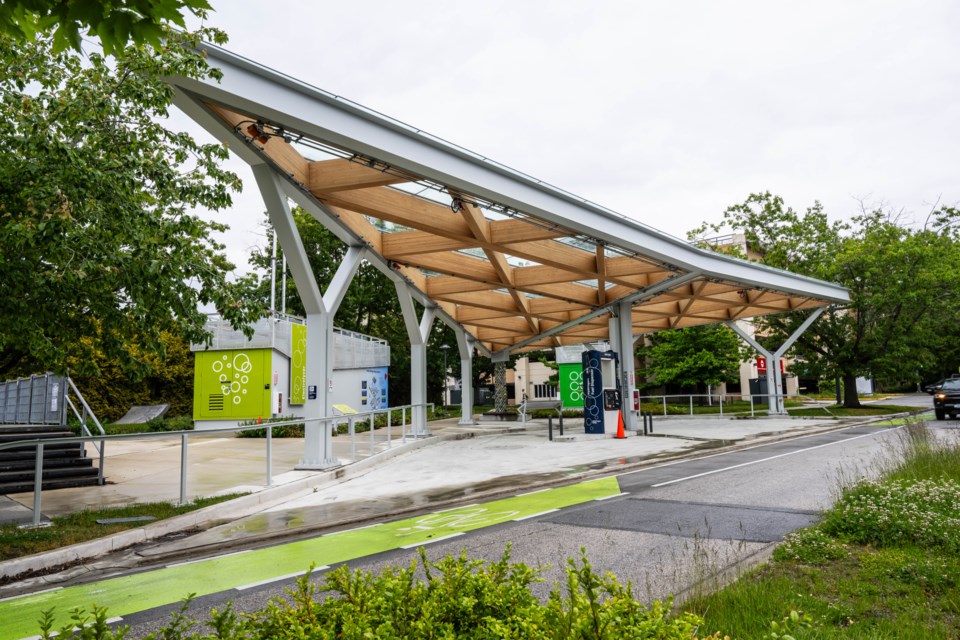The University of BC showcased a new $23 million “smart” hydrogen hub Wednesday that will use solar power to both charge electric vehicles and produce green hydrogen.
UBC’s new Smart Hydrogen Energy District (SHED) is a demonstration project that uses UBC’s 5G network and machine learning to optimize clean energy use.
“The whole idea behind this project is really to stop thinking about individual assets in the built environment or in transportation…as separate entities and really start thinking about integrated energy systems,” said Walter Merida, UBC professor of mechanical engineering and SHED research lead.
“By integrating energy, transportation, and design, SHED not only supports our CleanBC goals but it also positions British Columbia as a world leader in the hydrogen economy,” said Josie Osborne, B.C. minister of Energy, Mines and Low Carbon Innovation.
Located at the corner of corner of Westbrook Mall and Thunderbird Boulvevard, the new clean energy project includes solar panels installed on a covered parkade, an electrolyzer for making green hydrogen, large scale battery storage, and a hydrogen fueling station for hydrogen fuel cell cars and trucks.
The electrolyzer will use the solar power generated on site, as well as BC Hydro power, to produce about 65 kilograms of green hydrogen per day. A typical hydrogen fuel car car’s tank holds about four kilograms of hydrogen.
Cars and parking garages are “two of the most unglamorous and under-utilized assets in the world,” Merida said.
As electric vehicle adoption increases, it will make sense to cover parkades and parking lots with solar panels to provide the power to charge the EVs. Those EVs can then provide battery storage.
“Each car is 60, 80, 100 kilowatts of power plant onboard,” Merida said. “And as cars become electrified, that power sitting there could be used by delivering some of that power back to the grid.”
Harnessing the UBC campus’s 5G network, a digital twin of the energy district will be created. It will use real-time data and machine learning to optimize efficiencies – like determining when to charge vehicles, or when to reverse the charge and put power back onto the grid, or when to use surplus power to produce hydrogen.
The $23 million project was funded largely by the provincial and federal governments:
- $8.3 million from the Ministry of Energy, Mines and Low Carbon Innovation;
- $5 million, Government of Canada;
- $4.6 million, Canada Foundation for Innovation;
- $4.6 million, BC Knowledge Development Fund; and
- $800,000 from HTEC




